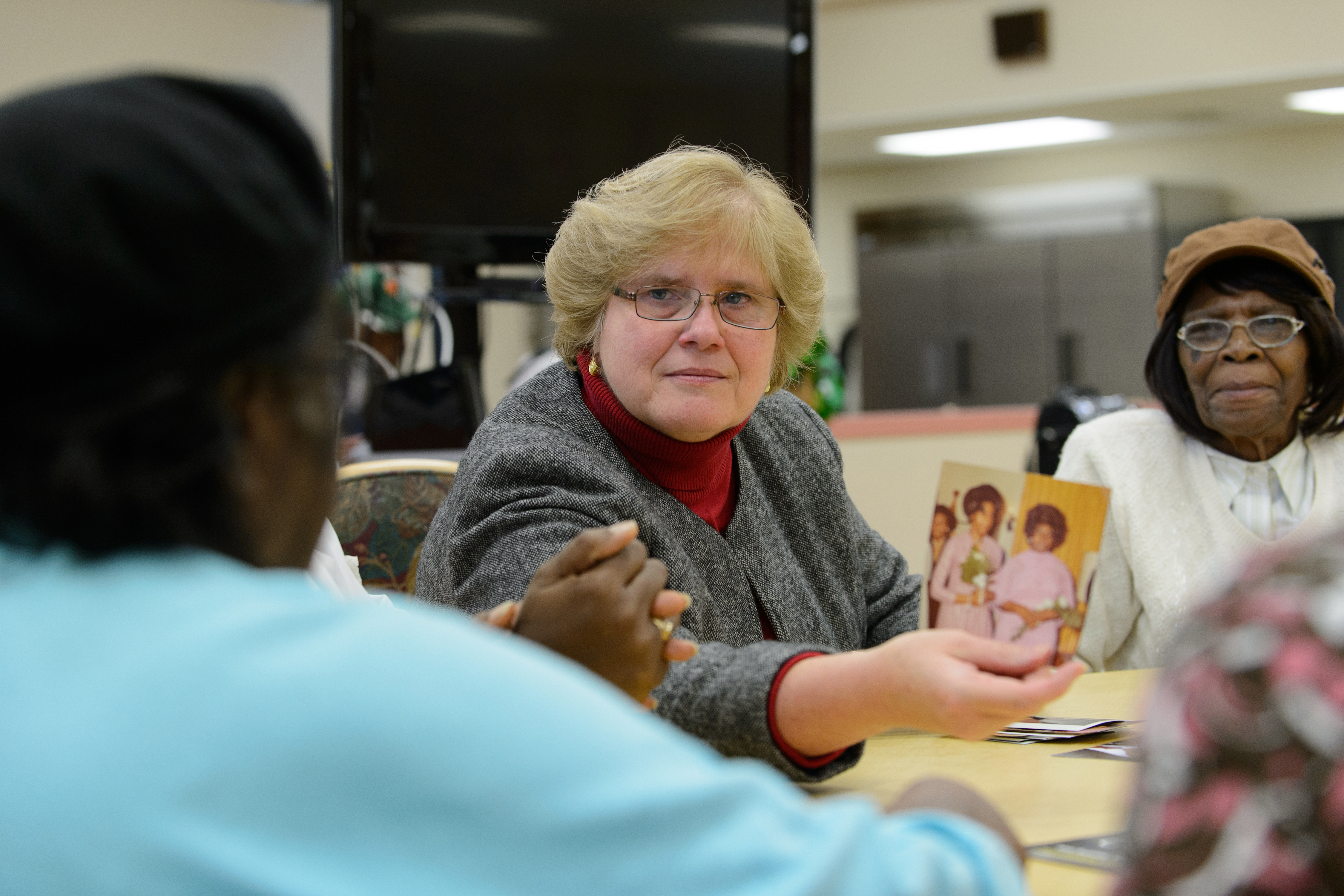Practicing nurses, nurse-scientists, and students are engaged in research on everything from emergency rooms to house calls. An event at the School of Nursing this spring gave a taste of the specialized work the school does in uniting clinical nursing practice with lab research and teaching.
The event included faculty, students, and staff, as well as community partners who collaborate with UConn nurses. They shared observations both humorous, as when nurse scientist Deborah MacDonald admitted that encouraging old women to reminisce about exercise did not seem to improve their quality of life, and poignant, as when a patient’s enthusiastic response to a survey reminded the researchers that even elderly veterans with mental health difficulties still wish to be useful.
Here’s a sampling of the projects that were presented:
Men and women have different bugs in their guts, it’s a pain, and Xiaomei Cong wants to know why.
Irritable bowel syndrome (IBS) affects more than 20 percent of the world’s population, and costs $21 billion per year. The symptoms of IBS include pain, bloating, diarrhea, and constipation, and Cong and her colleagues in the School of Nursing wondered if a person’s genetics and the type of bacteria in the gut might have something to do with it.
Cong and a team of researchers and nursing students interviewed 76 young adults with irritable bowel syndrome about their pain, sequenced their DNA, and sampled their digestive tract bacteria. They found that women tended to have more diverse bacterial ecologies; men tended to have more Clostridia bacteria (a family of bacteria with a bent toward causing nasty diseases); and certain versions of pain genes seemed to influence the diversity of a person’s gut bacteria.
In case you’re wondering how the researchers found out what bacteria lived in each person’s digestive system, “We taught people how to collect stool samples,” says Cong. “This was the fun part!”
She was equally enthusiastic about the preliminary data collected, which will help her team secure funding to continue. She plans to expand the study to include younger and older age groups, and also test how self-management interventions personalized for a patient’s underlying genes and microbiome can help improve their pain, other symptoms, and health outcomes.
Home visits by healthcare professionals can sharply reduce the number of times a frail older adult visits the emergency room, according to a study by UConn, Middlesex Hospital, and St. Luke’s Community Services called the Got Care! project.
The typical Got Care! patient was over 65 years old and had a least two chronic conditions such as heart disease and diabetes, plus a mental health or substance abuse disorder. A team of faculty and students specializing in geriatrics, including a nurse practitioner, a doctor, a pharmacist, a physical therapist, a social worker, and a dentist visited each patient at home, interviewed them, and assessed their needs. They then shared what they learned with the patient’s primary care doctor, and also connected the patient with other resources, such as nutritional support and palliative care.
The results of the study were overwhelmingly positive. Emergency room visits by the patients in the study plunged 26 percent. The primary care doctors appreciated the insight into their patients’ lives that the home visits provided. And the patients themselves said the home visits made them feel valued.
“It’s wonderful that students can learn from us,” one participant said.
The study was also an example of collaborative work between a nurse practitioner Millicent Malcolm; a Ph.D. RN, Juliette Shellman; and Ph.D. candidate Anna Rae LeClaire, a type of collaboration UConn’s School of Nursing encourages.
“We relied on each other’s strengths, and found we could study and treat the problems of older adults simultaneously,” Malcolm says. The Got Care! team would like to develop a service line that will allow Middlesex Hospital to bill Medicare and Medicaid for the at-home visits so that it can continue this effective team approach to the care of older adults.
Drop a can of tomatoes on your foot and the pain and swelling usually goes away after a few days. But occasionally the pain lasts long after the injury heals.
Ph.D. candidate Brittany Knight suspected the problem might be abnormal activity of an important molecule in the body. It’s called Tissue Inhibitor of Matrix Metalloproteinase-1 (TIMP-1). Matrix metalloproteinases (MMPs) are enzymes that break down the scaffolding that supports cells. They come to clean up damaged tissue when there’s an injury, like when you mash your foot with a can. A day or two later TIMP-1 shows up like a bouncer at closing time to tamp things down: “Whoa, damaged cells are gone, party over, MMPs clear out!”
While most of the pain research out there has focused on TIMP-1’s role as MMP regulator, Knight’s research looked at something new: the possibility that TIMP-1 can facilitate pain relief through a previously unknown pathway.
In Knight’s study, she measured TIMp-1 and pain levels in mice with an inflamed paw. Some of the mice had normal gene expression for TIMP-1, while others lacked it. The mice without TIMP-1 developed rapid onset and persistent pain in their inflamed paw, while the normal mice recovered from their pain in just a few days. And when mice lacking TIMP-1 received replacement TIMP-1 protein, they recovered just as fast as normal mice.
Knight, who works with Kyle Baumbauer in the School of Nursing at UConn in Storrs and the Department of Neuroscience at UConn Health, suspects that abnormal TIMP-1 signaling might also contribute to persistent pain and swelling in some people. TIMP-1 injections after an injury might decrease long-term pain in these folks. Knight’s focus now is determining how replacing TIMP-1 contributes to pain relief in the experimental mice that don’t produce TIMP-1 on their own, and what this could reveal about TIMP-1’s pain relief pathway in people.



